|

HOME |
ABOUT | INDEX |
NEWS |
FACEBOOK |
CONTACT
INTERSEX
Biological |
Anatomical | Bodily
What is Sex?
Male
or Female?
"Sex,"
as a label or identifier, describes the physical elements of one’s biology and anatomy.
"Sex," used in this sense, relates to a person's body and
bodily functions. It is a person’s medical assignment
(or identification) as manifest
through reproductive organs, genitals, hormones, and chromosomes. This
assigned sex is called a person’s “natal sex.” These
anatomical details are thought to define (or identify) a person as
male or female. In some cases, a person might be
described as somewhere in between the two extremes and we
would refer to that person as "intersex."
Previously, the label "hermaphrodite" was used.
Our Bodies Ourselves: Separating Sex and Gender
What Makes You Male or Female?
The Way We Think About Biological Sex is Wrong
Medical Dictionary: Anatomical Sex


What is Intersex?
"Intersex"
is a general term used for a variety of conditions in
which a person is born with a reproductive or sexual
anatomy that doesn’t seem to fit the typical definitions
of female or male. For example, a person might be born
appearing to be female on the outside, but having mostly
male-typical anatomy on the inside. Or a person may be
born with genitals that seem to be in-between the usual
male and female types—for example, a girl may be born
with a noticeably large clitoris, or lacking a vaginal
opening, or a boy may be born with a notably small
penis, or with a scrotum that is divided so that it has
formed more like labia. Or a person may be born with
mosaic genetics, so that some of her cells have XX
chromosomes and some of them have XY.
Typically,
the medical community may refer to an intersex person as
having a Sexual Development Disorder (DSD). This term is
purely clinical and does not address the nuances of the
intersex experience.

Though we
speak of intersex as an inborn condition, intersex
anatomy doesn’t always show up at birth. Sometimes a
person isn’t found to have intersex anatomy until she or
he reaches the age of puberty, or finds himself an
infertile adult, or dies of old age and is autopsied.
Some people live and die with intersex anatomy without
anyone (including themselves) ever knowing.
Intersex
variations include
Androgen Insensitivity Syndrome,
Klinefelter Syndrome, Marfan Syndrome,
Congenital Adrenal Hyperplasia, Vaginal
Agenesis, and Gonadal
Dysgenesis.
New Study Sheds Light on Disparities
Faced by Intersex People
IC4E: Intersex Campaign for Equality
Biden Administration Warns Against Forced Surgeries on
Intersex Children
BuzzFeed: Interview With Intersex People
Video: What Does Intersex Mean?
Queer Intersex Youth at Heightened Risk of Conversion
Therapy and Suicide Attempts
United Nations Adopts First-Ever Resolution on
Rights of Intersex People
Intersex: More Than a Diagnosis
APA: Answers to Intersex Questions
Info: Sex and Gender
Born Intersex: Mx. Anunnaki Ray Maquez
Lambda Legal: Intersex Patient Rights
Between Genders: Exploring Intersex
Video Documentary 2: Real Intersex Stories
Blume (My Life Being Intersex):
Interesting and Sexy
Secretly Intersex: Polish War Hero
Casimir Pulaski

Emily Quinn: What It's Like to be Intersex
Here’s
What it Really Means to be Intersex
Human Rights Watch: Doctors Need Intersex
Care Standards
Colorado Issues Intersex Birth Certificates
MedLine Plus: Intersex
Secret Intersex Documentary: Neither Male Nor Female
ABC News Report: Intersex Children
What Does AMAB and AFAB Mean?
GLAAD: Debunking Intersex Myths
Mari Wrobi: I Discovered I am Intersex When I Was 21
Years Old
Video
Documentary 1: Real Intersex Stories
Biden
Administration Warns Against Forced Surgeries on
Intersex Children in Historic Report
Adm. Rachel Levine's office issued the guidance that
warned of the lasting harm of such interventions....
The Department of Health and Human Services has released
a first-of-its-kind report on health equity for intersex
individuals, citing the lasting harm surgical
interventions inflict on infants and others subjected to
nonconsensual procedures.
Titled “Advancing Health Equity for Intersex
Individuals,” the groundbreaking paper was issued by the
Office of the Assistant Secretary for Health, led by
Adm. Rachel Levine, the first out trans official
confirmed by the US Senate.
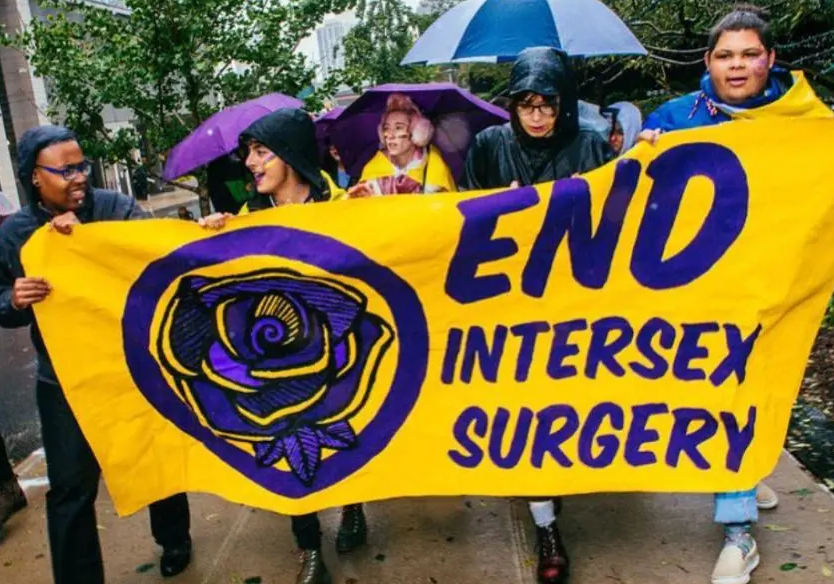

New Study Sheds Light on Disparities
Faced by Intersex People
Biden Administration Warns Against Forced Surgeries on
Intersex Children in Historic Report
Queer Intersex Youth at Heightened Risk of Conversion
Therapy and Suicide Attempts, New Study Finds
Biden-Harris Administration Advanced Gender Equity and
Equality at Home and Abroad
InterAct: Unprecedented Engagement on Intersex Issues by
Biden Administration
2020 Study of Intersex People in US: It’s Alarming
There is “growing evidence that surgical interventions
on intersex infants can cause lasting harm, including
stigma and medical mistrust,” the report details.
“Historic and current medical practices have often
focused on surgical interventions on infants to change
their sex characteristics to conform with a single sex,
rather than the health care needs of the intersex
individual.”
“Research and advocacy from intersex individuals has
documented that non-consensual, medically unnecessary
interventions for intersex infants can cause lifelong
harm. These interventions impact people into adolescence
and adulthood, and intersex adults face significant
barriers in accessing high-quality care that affirms and
meets their needs.”
The report defines intersex as “an umbrella term to
refer to people born with differences or variations in
their sex characteristics or reproductive anatomy.” An
estimated 5 million people in the US, or about 1.7% of
the population, fall within the definition, displaying
40 identified variations.
Those variations “are most commonly identified at birth
or during puberty, but it is also not uncommon for
adults to discover they have intersex traits while
seeking fertility care or through unrelated medical
procedures,” the report states. “While many intersex
individuals may require specialized health care, for
many intersex people, their variations in sex
characteristics are a healthy part of human diversity
and do not pose any threats to overall health.
Nevertheless, many intersex individuals report facing
medical interventions because their variations in sex
characteristics have been treated as a medical
disorder.”
Surgical interventions can lead to a host of negative
physical and mental effects for intersex individuals,
including significant scarring, loss of sexual function,
urinary or vaginal complications, chronic pain, and
early-onset osteoporosis. Intersex people suffer
disproportionate rates of trauma and mental health
issues due to lack of affirming care, the report noted.
Despite those risks, medical practitioners still
encourage parents to have surgeries on intersex infants,
citing potential stigma for the natural differences in
sexual anatomy a child may display.

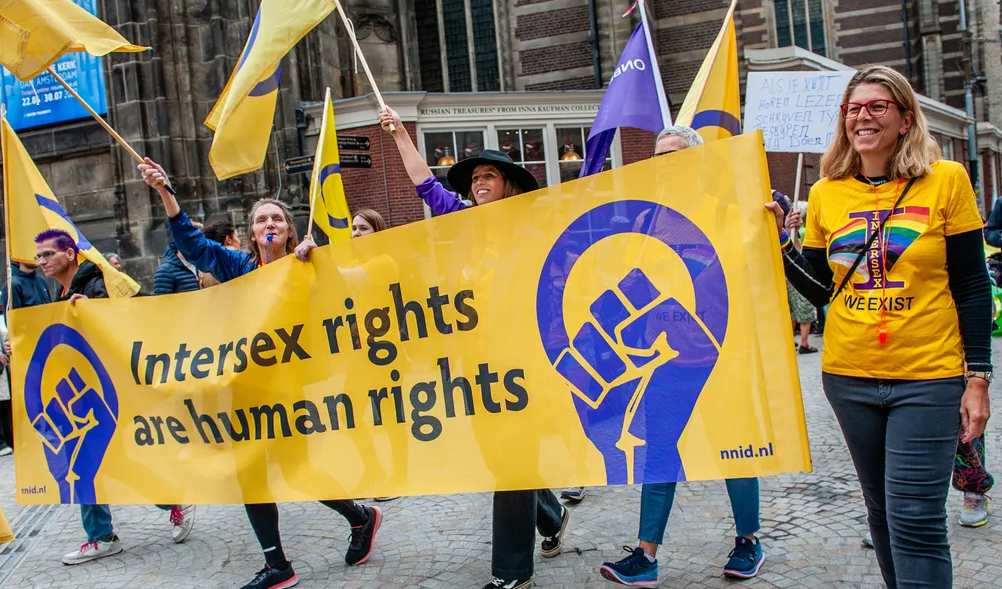
The report recommends a set of guiding principles to
address intersex health equity, including protecting the
civil rights of intersex people, affirming the role of
parents in supporting their intersex children, and
promoting bodily autonomy and informed consent.
The report also notes the importance of self-acceptance
among the intersex population. “Discussions about
intersex variations can also enable many intersex
adolescents and adults to appreciate their body,
improving overall self-acceptance and mental health.”
“Over the past decades, a growing body of evidence and
advocacy by intersex people has demonstrated that
current medical practices for intersex patients,
especially children, can cause lifelong harm and must be
reevaluated,” the report states. “Even as this report
acknowledges the pervasive barriers intersex people face
in our society and health care system, it makes clear
that, when intersex people are affirmed and receive
high-quality care, they can thrive.”
[Source: Greg Owen, LGBTQ Nation, January 17, 2025]
New Study Sheds Light on Disparities
Faced by Intersex People
IC4E: Intersex Campaign for Equality
Biden Administration Warns Against Forced Surgeries on
Intersex Children
BuzzFeed: Interview With Intersex People
Video: What Does Intersex Mean?
Born Intersex: Runs in the Family
Intersex: More Than a Diagnosis
Queer Intersex Youth at Heightened Risk of Conversion
Therapy and Suicide Attempts
United Nations Adopts First-Ever Resolution on
Rights of Intersex People
APA: Answers to Intersex Questions
Info: Sex and Gender
Born Intersex: Mx. Anunnaki Ray Maquez
Lambda Legal: Intersex Patient Rights
Between Genders: Exploring Intersex
Video Documentary 2: Real Intersex Stories
Blume (My Life Being Intersex):
Interesting and Sexy
Secretly Intersex: Polish War Hero
Casimir Pulaski
What is Endosex?
Endosex is a new term that means the opposite of
intersex. It means non-intersex. It means that a person
has innate physical sex characteristics that match what
is expected for female or male bodies. Innate means that
the person is born with these characteristics, including
chromosomes, hormones, genitals and other anatomy.
Prior to
the introduction of the term "endosex," a popular term
was "dyadic." The term derives from the Latin word for
two or pair. Some discussion has ensued as to the best
term to use to refer to non-intersex people. Among the
possible terms that were bandied about were perisex (peri
means around) and mesosex (meso means in the middle). It
was even suggested that intersex was between intrasex
and extrasex.

Intersex Society of North America
United Nations Adopts Historic First-Ever Resolution on
Rights of Intersex People
How Many Trans
and Intersex
People Live in
the US?
Biden Administration Committed to
Protecting Intersex People's Rights
Not Everyone is Male or Female: Growing Controversy over
Sex Designation
GLAAD: Debunking Intersex Myths
What the Intersex Community Wishes You Knew: We are OK
the Way We Are
PBS Video: Growing Up Intersex
How Common
is Intersex?
According
to Intersex Activist and Educator Anunnaki Ray Marquez,
"endosex' is the proper word to use to describe people
who were not born intersex. Endosex is a way to describe
sex characteristics that categorize as typical
anatomical females or males. Endosex people can have any
gender identity: man, woman, both, neither. Endosex
people can be transgender, gender fluid, bi-gender,
tri-gender, asexual, and all the many other ways to
describe gender identity. Some people use the word
“dyadic” instead of endosex. "Dyadic" is not typically
preferred due to it reinforcing the binary male/female
binary construct that does not exist if we are to
include intersex people.
Endosex Male: Is the physiological sex that produces
sperm. Most male mammals, including male humans, have
one Y and one X chromosomes.
Endosex Female: Is the sex of an organism, or a part of
an organism, that produces non-mobile ova (egg cells).
Most female mammals, including most female humans, have
two X chromosomes.
Altersex
is a catch-all term consisting of “alter”, meant here as
“different” or “another possibility,” and sex, referring
to physiological primary and secondary sex
characteristics. Altersex refers to possible sexes that
are neither endosex nor intersex, in the cases of those
who go through HRT or sexual reassignment surgery of
some sort to change their sex. Altersex is a word that
can be used for people who are not born intersex, who
alter their sex to appear intersex.
Intersex Advocacy: Past
and Present
Ana Roxanne: Intersex
Musician
Sex Redefined: The Idea of 2 Sexes Is
Overly Simplistic
I Am Intersex: Supermodel Hoping To End Stigma
Born Intersex. Why Her Parents Let Her Grow Up Without
Surgical Intervention
Intersex People are Challenging Gender-Normalizing
Surgery
Irene Kuzemko: Everything I Was Told Was a Lie
Wikipedia: Intersex Defined
HRC: Understanding the Intersex Community
Secretly Intersex: Polish War Hero
Casimir Pulaski
  

Intersex People
Christine
Jorgensen - First Person to Undergo SRS
Mx. Anunnaki
Ray Marquez - Activist, Educator, Writer
Mari Wrobi
- Youth Advocate
Hanne Gaby Odiele
- Belgian Fashion Model
Ana
Roxanne - Musician
Santhi
Soundarajan - Indian Athlete
Reuben Zellman - US Rabbi and Musician
Sara Kelly
Keenan - Issued First Intersex Birth Certificate in US
Caroline
Cossey - English Fashion Model
Cary Gabriel Costello - US Sociology Professor
Betsy
Driver - Mayor of Flemington NJ, First Intersex US
Elected Official
Florian-Ayala Fauna - American Musician and Music
Producer
Sarah Gronert - German Tennis Player
River
Gallo - Filmmaker
Eden Atwood - US Jazz Musician
Marissa
Adams - Communications Coordinator at InterConnect
Support Group
Carlett
Brown Angianlee - US Navy Officer, First African
American to Undergo SRS





Emily Quinn: What It's Like to be Intersex
TED Talk: Mx. Anunnaki Ray Maquez, Born Intersex
Alyssa Ball (The Intersex Witch): Interesting and Sexy
Understanding the Intersex Community
Massachusetts: Model for Intersex Rights
Emily Quinn: What It's Like to be Intersex
TED Talk: Intersex is Awesome
Harvard Medical School: Intersex Variations
What Does AMAB and AFAB Mean?
Born Intersex: Runs in the Family
Alyssa
Ball - Educator, Activist
Pidgeon
Pagonis - Author
Emily
Quinn - Activist, Advocate
Jimmy
Scott - Jazz Musician
Morgan
Carpenter - Australian Activist, Created Modern Intersex
Flag
Lisa Lee
Dark - Welsh Opera Singer
Irene
Kuzemko - Secretary of Organisation Intersex
International Europe
Dora Ratjen - German Athlete
Alicia
Roth Weigel - Activist
Jemma Redmond - Irish Biotechnologist and Innovator
Veronique Renard - Dutch Author and Artist
Dana Zzyym
- US Navy Veteran
River
Gallo - Film Director
Ana
Roxanne - Musician
Dani Coyle
- Artist, Photographer
Erik
Schinegger - Alpine Skier
Jim Sinclair - Autism Rights Activist
Casimir
Pulaski - Polish War Hero
Georgina Somerset - First Openly Intersex Person in the
UK
Kimberly Zieselman - US Advocate, Attorney, and
Executive Drector of InterACT
Tony
Briffa - Australian Politician and Activist, World's
First Out Intersex Mayor (Also: Current co-executive
director of Intersex Human Rights Australia and
Vice-President and former President of the Androgen
Insensitivity Syndrome Support Group Australia)




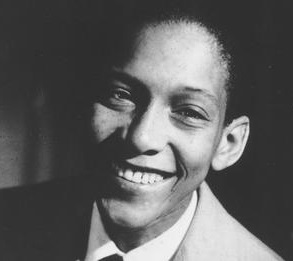
New Study Sheds Light on Disparities
Faced by Intersex People
IC4E: Intersex Campaign for Equality
United Nations Adopts First-Ever Resolution on
Rights of Intersex People
Teen Vogue: Teens Who Discovered They Are Intersex
Sara Kelly Keenan: First Intersex Birth Certificate
Mx. Anunnaki Ray
Marquez: Website
Mari Wrobi: I Discovered I am Intersex When I Was 21
Years Old
Emily Quinn: My Coming Out Story
Intersex Supermodel Hanne Gaby Odiele
Dani Coyle: Spotlighting the Intersex Community
Jazz Legend Little Jimmy Scott Is a Cornerstone of Black
Intersex History
Ana Roxanne: Intersex
Musician
Intersex Fashion Model Hanne Gabby Odiele
Not Everyone is
Male or Female: Growing Controversy over Sex Designation
Fix your
hearts... Not our parts
Check out
your birth certificate and surely you'll see a
designation for sex. When you were born, a doctor or
clinician assigned you the "male" or "female" label
based on a look at your genitalia. In the US, this has
been standard practice for more than a century.
But sex designation is not as simple as a glance and
then a check of one box or another. Instead, the
overwhelming evidence shows that sex is not binary. To
put it another way, the terms "male" and "female" don't
fully capture the complex biological, anatomical and
chromosomal variations that occur in the human body.
That's why calls are growing to remove sex designation
from birth certificates, including a recent
recommendation from the American Medical Association.
I am a professor of medicine who has worked extensively
on lesbian, gay, bisexual, transgender, queer, intersex
and asexual (LGBTQIA) issues. My co-author is a
professor of gynecology who is deeply involved in the
health of people who are trans and intersex.
Our research and clinical experience show that sex
designation is not something to take for granted. For
those who don't fit neatly into one of two categories
(and there are millions) an inappropriate classification
on a birth certificate can have consequences that last a
lifetime.



Time
Mag: This is What Intersex Means
Video: What it's Like to be Intersex
Maria: I Happen to Like Girls, I Happen to be Intersex
Klinefelter Syndrome Explained
Alyssa Ball: Vulnerability and Intimacy
California Denounces Corrective Surgery on Intersex
Children
Out: Intersex Supermodel Hanne Gaby Odiele
HRC: Understanding the Intersex Community
Info: Transgender
The
problems with sex designation
Variations
in genital anatomy happen more frequently than you might
think; they occur in 0.1 to 0.2% of births annually. In
the US, that's about 4,000 to 8,000 babies each year.
Other sex traits don't necessarily help either. Doctors
examining the reproductive organs can find people born
with both a vagina and testes, and also those born
without any gonads. And when evaluating an individual's
estrogen and testosterone hormone levels, long defined
as key determinants of female and male bodies, doctors
find some people with vaginas still produce significant
amounts of testosterone. Because of this, testosterone
is not a great indicator for defining sex; higher
amounts of testosterone do not necessarily make someone
male.
Even karyotyping — a laboratory procedure used since the
1950s to evaluate an individual's number and type of
chromosomes — doesn't tell the whole story. While we
typically expect people to either have XX or XY pairs of
sex chromosomes, many people have variations that do not
fit either category. These include Turner syndrome, in
which a person is born with a single X chromosome, and
Kleinfelter syndrome, which occurs when a person is born
with a combination of XXY chromosomes.
In short, human diversity has demonstrated that the
binary categories of male and female are incomplete and
inaccurate. Sex designation, rather than "two sizes fit
all," is on a spectrum. Up to 1.7% of the US population
(that's more than 5 million Americans) have an anatomy
and physiology that present intersex traits.
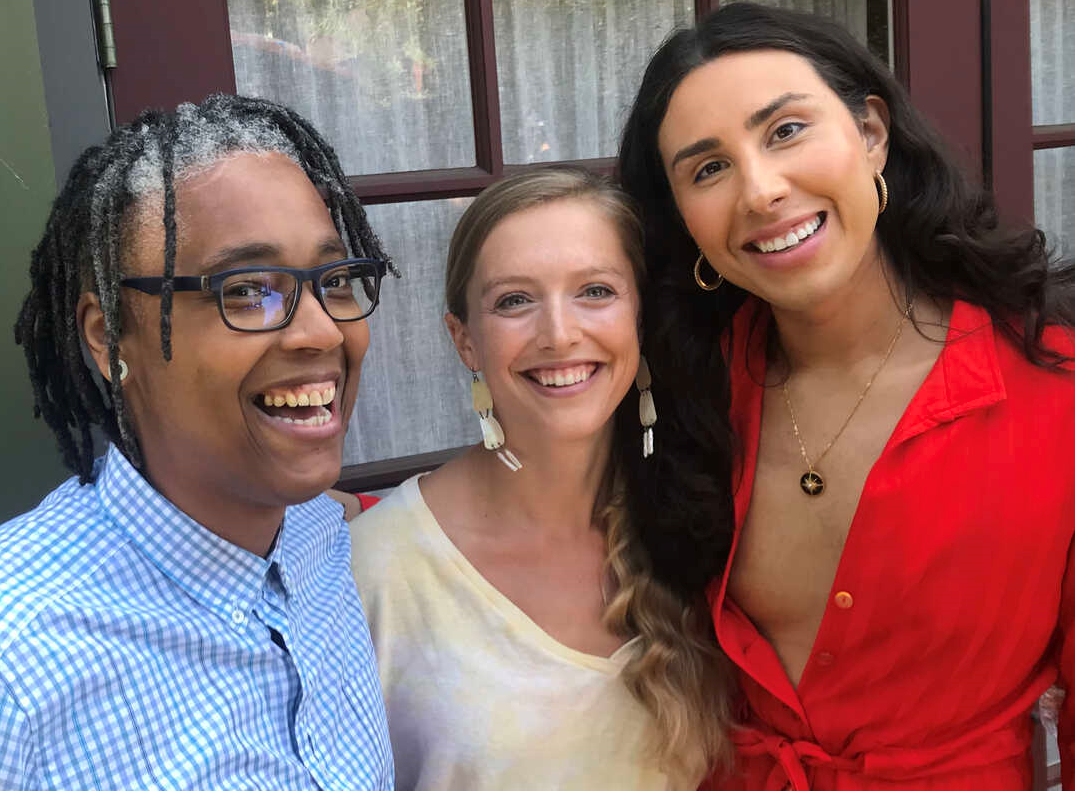

Lambda Legal: Intersex Patient Rights
Born Intersex: Runs in the Family
Dani Coyle: Spotlighting the Intersex Community
Intersex People Don't Need to Be Fixed
Advocate: Intersex Myths and Misconceptions
InQueery: What Does Intersex Mean?
Emily Quinn: Androgen Insensitivity Syndrome
Info: Gender Queer
Wikipedia: Hermaphrodite
Blume (My Life Being Intersex):
Interesting and Sexy
Binary designations can be damaging
Those with intersex traits who are assigned at birth to
be female or male can experience medical care that harms
them, both physically and psychologically.
Sometimes physicians perform surgeries to align bodies
into binary categories. For example, those born with a
larger than typical clitoris may have it reduced in
size. But some who have this childhood surgery suffer as
adults from pain and difficulty having sex.
Additionally, governments sometimes limit those with
intersex traits from fully participating in society. For
instance, in Australia, marriages have been annulled
because governments have previously ruled that an
intersex person (someone not seen to be "100% man" or
"100% woman") cannot be legally married.
Private entities often do the same. The International
Olympics Committee uses cutoffs of hormone levels to
determine who plays in women's sports. As a result, some
athletes have been barred from participation.



And for those with a gender identity that differs from
the sex designation on a government document,
discrimination, harassment or violence can result.
State governments have begun to acknowledge sex
diversity. Some let gender-diverse people change their
designation on birth certificates, although there are
restrictions. Medicine too is changing. For example,
some pediatric centers have stopped performing surgeries
on newborns with differences in sex development. Still,
society at large has been much slower to move beyond the
use of strictly binary categories.
As clinicians, we strive to be accurate. The evidence
shows that using male and female as the only options on
birth certificates is not consistent with scientific
reality. Evidence shows that removing this designation
will tell new parents that it's not sex assignment
that's most important at birth but rather the
celebration of a healthy and happy baby.
[Source: Carl Streed Jr, Assistant Professor of
Medicine, Boston University and Frances Grimstad,
Assistant Professor of Gynecology, Harvard University;
February 2022]

United Nations Adopts Historic First-Ever Resolution on
Rights of Intersex People
Pidgeon Pagonis Reveals Long Held Secret: Nobody Needs
to Know
For the Intersex Community: Every Body Exists on a
Spectrum
Not Everyone is Male or Female : Growing Controversy
over Sex Designation
What Does AMAB and AFAB Mean?
I am Intersex: Supermodel Hoping To End Stigma
Born Intersex. Why Her Parents Let Her Grow Up Without
Surgical Intervention
How Common
is Intersex?
Intersex Society of North America
Intersex Advocacy: Past
and Present
Ana Roxanne: Intersex
Musician
Jazz Legend Little Jimmy Scott Is a Cornerstone of Black
Intersex History
Massachusetts: Model for Intersex Rights
Cheryl Chase:
Founder of Intersex Society of North America
Bo Laurent, better known by her
pseudonym Cheryl Chase (born 1956), is
an American intersex activist and the
founder of the Intersex Society of North
America. She began using the names Bo
Laurent and Cheryl Chase simultaneously
in the 1990s and changed her name
legally from Bonnie Sullivan to Bo
Laurent in 1995.
Chase had a "nervous breakdown" in her
mid-30s. She said she once contemplated
committing suicide "in front of the
mutilating physician who had rendered
her genitalia numb and scarred."
When she was 35 she badgered her mother
for answers, and then embarked on a
search for a fuller understanding of
what she had learned. Chase contacted
many academic researchers and people
with personal experiences of intersex
conditions.

In 1993 she founded the now-defunct
Intersex Society of North America (ISNA)
and asked for people to write to her
under her new name, Cheryl Chase, which
was the beginning of the movement to
protect the human rights of people in
the USA born with intersex conditions.
ISNA was honored with the International
Gay and Lesbian Human Rights
Commission's 2000 Felipa de Souza Human
Rights Award.
She is the creator of Hermaphrodites
Speak! (1995), a 30-minute documentary
film in which several intersex people
discuss the psychological impact of
their conditions, the medical treatment
and parenting they received, and she is
the editor of the journal Hermaphrodites
with Attitude.
In 1998 Chase wrote an amicus brief for
the Colombian constitutional court,
which was then considering a ruling on
surgery for a six-year-old boy with a
micropenis. In 2004 Chase and the ISNA
persuaded the San Francisco Human Rights
Commission to hold hearings on medical
procedures for intersex infants.
Her activism was a factor in the urology
and endocrinology disciplines reopening
of their consideration of intersex
conditions. She advocates a more complex
view of intersexuality: in particular
that difficulties cannot be eliminated
by early genital surgery.
Chase has written about being openly
lesbian since her 20s. She married her
partner of five years, Robin Mathias, in
San Francisco in 2004. They live on a
hobby farm in Sonoma and remarried in
2008.
Intersex Society of North America
Alyssa Ball (The Intersex Witch): Interesting and Sexy
How Many Trans
and Intersex
People Live in
the US?
Born Intersex: Runs in the Family
Biden Administration Committed to
Protecting Intersex People's Rights
Not Everyone is Male or Female: Growing Controversy over
Sex Designation
GLAAD: Debunking Intersex Myths
HRC: Understanding the Intersex Community
What the Intersex Community Wishes You Knew: We are OK
the Way We Are
PBS Video: Growing Up Intersex
How Common
is Intersex?
Intersex Advocacy: Past
and Present
Ana Roxanne: Intersex
Musician
Sex Redefined: The Idea of 2 Sexes Is
Overly Simplistic
Dana Zzyym:
Intersex Activist
Dana Zzyym was born in 1958 with sex
characteristics that are not typically
male or female, but was raised a boy by
their parents. As a result, Dana was
forced to undergo several irreversible,
painful, and medically unnecessary
surgeries to conform to binary sex
stereotypes. The surgeries failed
immediately and traumatized Dana with
permanent scarring and damage.

Dana Zzyym: Biographical Notes
Lambda Legal: Dana Zzyym Receives First
'X' on US Passport
Dana Zzyym Receives First US Passport
With 'X' Gender Marker
Later into their adult life, Dana
learned they were born with intersex
traits and had been forced into an
incorrect binary sex/gender category. As
an Intersex and nonbinary person who
advocated for human rights, Dana was
invited to attend an International
Intersex Forum in Mexico City, at which
time they applied for a US passport.
Dana’s application was denied by the US
State Department because they could not
truthfully select “M” or “F” in the sex
field and their request to select
another option such as “X” was rejected.
Denying Dana a passport would be
depriving them access to any and all
means of lawfully exiting the United
States, so Dana fought back. They sued
the US State Department for denying them
a passport that accurately reflected
their identity and made history by
becoming the first US citizen to receive
an official US passport with an “X”
gender marker.
IC4E: Intersex
Campaign for
Equality
Pidgeon Pagonis Reveals Long Held Secret: Nobody Needs
to Know
Intersex Advocacy: Past
and Present
Ana Roxanne: Intersex
Musician
Massachusetts: Model for Intersex Rights
What Does AMAB and AFAB Mean?
For the Intersex Community: Every Body Exists on a
Spectrum
Emily Quinn: What It's Like to be Intersex
TED Talk: Intersex is Awesome
Harvard Medical School: Intersex Variations
Mari Wrobi:
Intersex Youth Advocate
Why I
never felt like a "normal girl"
Intersex
people are viewed as a biological fluke, a mistake.
Certainly not an identity to be celebrated. Which is why
most intersex people are never told that we’re intersex.
Admitting that we’re intersex would mean identifying
that there is a broader community of people with a
shared or similar experience that would create a sense
of pride, the creation of our own culture, and our
mobilization against the injustices that intersex people
face. So, the word intersex is left out of most of our
stories – for months, years, even decades at a time.
Given this stigma, most people will never understand the
absolute relief that followed the discovery that I’m
intersex.
The process started for me several years after I’d
already come out as transgender. Rather than being
concerned when I didn’t get my period, I was elated. It
was as if my prayers had been answered. My stomach and
legs being hairier than my brother was a personal
achievement. My higher-than-average sex drive was the
social expectation for a boy my age. I liked that I
didn’t need to strain my voice for it to take on a
naturally deeper tone. And I even remember making a
secret trip to Target so that I could buy men’s razors
to shave the thick hair growing on my face.
My body
felt like a home to the identity that I was cultivating
as a boy going through puberty. But I eventually came to
understand that this puberty (during which I developed
the ‘wrong’ secondary sex characteristics as a result of
my body producing the ‘wrong’ primary sex hormones) was
an intersex puberty that I simply didn’t have the
knowledge or vocabulary to describe. The dysphoria and
disconnect that I felt with my assigned sex at birth and
the feeling that my body was more aligned with the other
binary sex was a result of being intersex, not
transgender.


Gender Fender Bender: Mari Wrobi
Mari Wrobi: I Discovered I am Intersex When I Was 21
Years Old
I wouldn’t have even known if it weren’t for a
conversation I accidentally started with my doctor.
Normally “When was your last period?” was a question I
shrugged off, but one day I answered it honestly
instead. “I’ve never had my period.” Finding out that
you’re intersex doesn’t happen in just one conversation,
though. It’s not like finding out you have the flu where
there are a few, quick and easily identifiable symptoms.
No, finding out that you’re intersex happens over the
course of hundreds of conversations with doctors,
parents, partners, and online forums full of messages
asking the same question that had crossed my mind once
or twice. “I’m already 18, 19, 20, and I’ve never had my
period. Am I okay?! Help!” But after enough bloodwork to
feel like a pin cushion and enough Googling to finally
find the word intersex, I started to understand why
I always felt so different. Why I never felt like a
‘normal girl’. Why I felt dysphoria with my assigned sex
and with the gender I identified as. Why I didn’t feel
like I had the ‘typical’ trans experience. I breathed a
sigh of relief when I finally put two-and-two together.
I am intersex. The thought made me feel like I was going
to be alright after all.
A few studies have looked at the intersection between
intersex and LGBTQ identities. One study from 2016 found
that 52% of intersex people identify as
‘non-heterosexual’. Another study found that up to 40%
of intersex people experience dysphoria and transition,
compared to only 10% of the general population. And,
when looking at the statistics of intersex youth
specifically, 75% identify as LGBTQ. Needless to say,
intersex people are very integrated into the LGBTQ
community – whether the ‘I’ is included in the acronym
or not. As someone who identifies as non-binary and
bisexual, I initially expected a positive experience
within my community. But the LGBTQ community has not
always been the most welcome place for intersex people.
For instance, I was used to cisgender people asking me
about my genitals or which bathroom I used, but I wasn’t
prepared for this to come from trans people too. Most
people, whether they’re cis or trans, harbor the
incorrect assumption that all intersex people have
‘ambiguous’ genitals. Within the
LGBTQ community, this ambiguity is viewed with jealousy
and desire, to the point where trans people tell me that
they wish they were intersex. But they don’t wish they
were actually intersex, because that means medical
trauma, social discrimination, and ignorance like this.
They either want points for existing outside of the sex
binary, or ‘ambiguous’ genitals to validate their
non-binary gender or androgynous presentation.
Aside from fetishization, I’ve been referred to as a
hermaphrodite (a slur used against intersex people)
within the LGBTQ community. I’ve been told that intersex
people make up such a small percentage of the population
that we’re not worth including or discussing even though
intersex people make up about 1 in 40 people, the same
amount of people in the population with red hair.
Further, it’s often assumed that all intersex people are
non-binary and, for those of us who are, since our
non-binary sex matches our non-binary gender, we’re
actually cisgender.
Perhaps worst of all, intersex people are routinely left
out of conversations that affect us too, such as
discussions on bathroom bills, reproductive rights,
non-binary gender markers, coercive gendering of
infants, Title IX protections, and more.


Gender Fender Bender: Mari Wrobi
Mari Wrobi: I Discovered I am Intersex When I Was 21
Years Old
So, how can we make the LGBTQ community more welcome for
intersex people? Easy. Use language that is inclusive of
intersex experiences. Terms that are considered
trans-inclusive such as ‘people with penises/vaginas’ or
‘biologically male/female’ actually exclude intersex
people by focusing on the genitalia rather than its
function. Instead, say what you mean. Say, ‘people who
menstruate’, ‘people who can get pregnant/can get
someone pregnant’, ‘people at risk of testicular
cancer’, to include intersex people who can also do
those things.
Recognize
that all intersex people are different. Intersex people
are just as diverse in our gender, expressions,
presentations, and sexualities as non-intersex people.
We can be cis or trans, straight or queer, masculine or
feminine or both or neither. Don’t assume you know our
identities based on the fact that we’re intersex alone.
Don’t use intersex people as ‘gotchas’. A common retort
from people during transphobic arguments is ‘but if
there are only two genders, then how do intersex people
exist?’ Try to avoid this. Intersex people don’t exist
solely to further your arguments, we are a diverse
community with unique needs that deserve our own
spotlight.
Don’t include us as an afterthought. At the end of the
day, the debate about including the ‘I’ in the acronym
is fought on both sides. But including one letter as a
last-ditch effort to be inclusive doesn’t quite cut it.
Unless you intend to make the community a safe,
inclusive and affirming place for intersex people, then
don’t simply add the ‘I’ for ally points. Do your part
to stand up for intersex people and educate others on
being the best intersex allies they can be before
claiming inclusivity.
[Source: Mari Wrobe, Gay Times, Sept 2019]
Emily Quinn: What It's Like to be Intersex
TED Talk: Intersex is Awesome
Harvard Medical School: Intersex Variations
Intersex People are Challenging Gender-Normalizing
Surgery
GLAAD: Debunking Intersex Myths
What the Intersex Community Wishes You Knew: We are OK
the Way We Are
Irene Kuzemko: Everything I Was Told Was a Lie
PBS Video: Growing Up Intersex
TED Talk: Mx.Anunnaki Ray Maquez, Born Intersex
Pidgeon Pagonis Reveals Long Held Secret: Nobody Needs
to Know
Teen Vogue: Teens Who Discovered They Are Intersex
Alyssa Ball: Vulnerability and Intimacy

Intersex Facts
--Intersex
is an umbrella term used to describe people who are born
with biological variations in their sex characteristics
that don’t fit female or male categories
--There is no one way to be intersex. An intersex person
can have traits which affect their chromosomes,
hormones, and/or internal and external genitalia.
--Being intersex occurs as a natural biological
variation in as much as 1.7% of the population.
--Intersex people face medical violence. The medical
system often views intersex people as something to be
erased or corrected by forcing intersex bodies to
undergo surgery or hormone therapy.
--Intersex people should be allowed autonomy over their
bodies. They should not be forced to have surgery or
hormone therapy in order to conform to a male or female
gender.
--Surgery or hormone therapy can be okay if it’s your
personal decision to give consent.
--Being intersex is not the same as being transgender.
--Some intersex characteristics are identified at birth,
while other people may not discover they have intersex
traits until later in life or never at all.
What Does AMAB and AFAB Mean?
Born Intersex. Why Her Parents Let Her Grow Up Without
Surgical Intervention
Intersex People are Challenging Gender-Normalizing
Surgery
Wikipedia: Intersex Defined
BuzzFeed: Interview With Intersex People
United Nations Adopts Historic First-Ever Resolution on
Rights of Intersex People
Video: What Does Intersex Mean?
Intersex: More Than a Diagnosis
Blume (My Life Being Intersex):
Interesting and Sexy
APA: Answers to Intersex Questions
Info: Sex and Gender
Lambda Legal: Intersex Patient Rights
Between Genders: Exploring Intersex

Anatomy
and Intersex
Sex Anatomy Spectrums
Which variations of sexual anatomy count as intersex? In
practice, different people have different answers to
that question. That’s not surprising, because intersex
isn’t a discreet or natural category.
What does this mean? Intersex is a socially constructed
category that reflects real biological variation. To
better explain this, we can liken the sex spectrum to
the color spectrum. There’s no question that in nature
there are different wavelengths that translate into
colors most of us see as red, blue, orange, yellow. But
the decision to distinguish, say, between orange and
red-orange is made only when we need it (like when we’re
asking for a particular paint color). Sometimes social
necessity leads us to make color distinctions that
otherwise would seem incorrect or irrational, as, for
instance, when we call certain people “black” or “white”
when they’re not especially black or white as we would
otherwise use the terms.
In the same way, nature presents us with sex anatomy
spectrums. Breasts, penises, clitorises, scrotums,
labia, gonads (all of these vary in size and shape and
morphology). So-called “sex” chromosomes can vary quite a
bit, too. But in human cultures, sex categories get
simplified into male, female, and sometimes intersex, in
order to simplify social interactions, express what we
know and feel, and maintain order.


IC4E: Intersex Campaign for Equality
Born Intersex: Runs in the Family
Understanding the Intersex Community
BuzzFeed: Interview With Intersex People
Sara Kelly Keenan: First Intersex Birth Certificate
Mx. Anunnaki Ray
Marquez: Website
For the Intersex Community: Every Body Exists on a
Spectrum
Emily Quinn: What It's Like to be Intersex
Intersex Supermodel Hanne Gaby Odiele
Dani Coyle: Spotlighting the Intersex Community
Jazz Legend Little Jimmy Scott Is a Cornerstone of Black
Intersex History
So nature
doesn’t decide where the category of “male” ends and the
category of “intersex” begins, or where the category of
“intersex” ends and the category of “female” begins.
Humans decide. Humans (today, typically doctors) decide
how small a penis has to be, or how unusual a
combination of parts has to be, before it counts as
intersex. Humans decide whether a person with XXY
chromosomes or XY chromosomes and androgen insensitivity
will count as intersex.
Research conducted by the Intersex Society of North
America finds that doctors’ opinions about what
should count as “intersex” vary substantially. Some
think you have to have “ambiguous genitalia” to count as intersex, even if your inside is mostly of one sex and
your outside is mostly of another. Some think your brain
has to be exposed to an unusual mix of hormones
prenatally to count as intersex. So that even if you’re
born with atypical genitalia, you’re not intersex unless
your brain experienced atypical development. And some
think you have to have both ovarian and testicular
tissue to count as intersex.
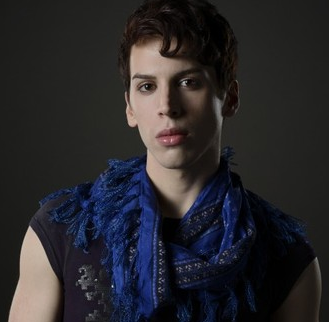


Rather than trying to play a semantic game that never
ends, the ISNA (Intersex Society of North America) takes a pragmatic approach to the
question of who counts as intersex. They work to build a
world free of shame, secrecy, and unwanted genital
surgeries for anyone born with what someone believes to
be non-standard sexual anatomy.
By the way, because some forms of intersex signal
underlying metabolic concerns, a person who thinks she
or he might be intersex should seek a diagnosis and find
out if she or he needs professional healthcare.
Intersex Society of North America
Emily Quinn: What It's Like to be Intersex
GLAAD: Debunking Intersex Myths
How Common
is Intersex?
For the Intersex Community: Every Body Exists on a
Spectrum
Massachusetts: Model for Intersex Rights
Intersex Surgeries: Viginoplasty and Clitorectomy
Info: Transgender
Mari Wrobi: I Discovered I am Intersex When I Was 21
Years Old
Video: What Does Intersex Mean?
Androgen Insensitivity Syndrome Explained
Ana Roxanne: Intersex
Musician

Teen Vogue: Teens Who Discovered They Are Intersex
InQueery: What Does Intersex Mean?
Between Genders: Exploring Intersex
Intersex Documentary: Neither Male Nor Female
Out: Intersex Supermodel Hanne Gaby Odiele
United Nations Adopts Historic First-Ever Resolution on
Rights of Intersex People
Wikipedia: Intersex Defined
Info: Gender Expression
Intersex Surgeries: Gonadectomy
Dani Coyle: Spotlighting the Intersex Community
Video Talk: What is Intersex
Intersex: More Than a Diagnosis
APA: Answers to Intersex Questions
Emily Quinn: Intersex Experiences
Jazz Legend Little Jimmy Scott Is a Cornerstone of Black
Intersex History
Intersex Human Rights Australia
Katie Talks to Oprah: Growing Up Intersex
Intersex People Talk: What It's Like to Be Intersex
Intersex
Presentations
Intersex is an umbrella term used for a variety of
conditions in which a person is born with a reproductive
or sexual anatomy that doesn’t seem to fit the typical
definitions of female or male. For example, someone can
be born with the appearance of being male (penis,
scrotum), but have a functional female reproductive
system inside.

There are
many examples of how intersex can present itself, and
here are some statistics from the Intersex Society of
North America that describe the frequency of intersex
births.
--Total
number of people whose bodies differ from standard male
or female -- One in 100 births
--Total number of people receiving surgery to
“normalize” genital appearance -- One or two
in 1,000 births
Examples:
--One in
1,666 births
--Not XX
and not XY
--One in 1,000 births
--Klinefelter
Syndrome (XXY)
--One in 13,000 births --Androgen
Insensitivity Syndrome
--One in 130,000 births --Partial Androgen Insensitivity
Syndrome
--One in 13,000 births
--Classical
Congenital Adrenal Hyperplasia
--One in 6,000 births
--Vaginal
Agenesis
--One in 83,000 births
--Ovotestes
--One in 150,000 births --Complete Gonadal
Dysgenesis
--One in 2,000 births
--Hypospadias
(urethral opening in perineum or along penile shaft)
--One in 770 births
--Hypospadias (urethral opening between corona and tip
of glans penis)
--One in 110,000 births --Idiopathic (no
discernable medical cause)
--One in 66 individuals
--Late onset
adrenal hyperplasia
Also:
--Iatrogenic (caused by medical treatment, for instance
progestin administered to pregnant mother)
--5 alpha reductase deficiency
--Mixed gonadal dysgenesis
[Source:
Intersex Society of North America]
Harvard Medical School: Intersex Variations
Mayo Clinic: Klinefelter Syndrome
Video Documentary 1: Real Intersex Stories
Living with XXY:
Spreading Positivity and Awareness
Famous People with Klinefelter Syndrome
Video Documentary 2: Real Intersex Stories
Klinefelter Syndrome Explained
This is Me with Klinefelter Syndrome
Celebrities with Klinefelter or Marfan Syndrome
Intersex
Supermodel: Hanne Gaby Odiele
Androgen Insensitivity Syndrome
Top fashion model Hanne Gaby Odiele revealed that she is
intersex, saying that she hopes speaking out will help
break a taboo. She was born with undescended testicles,
which were removed when she was 10 after doctors warned
that they could cause cancer.
Intersex people are born with a mixture of male and
female sex characteristics. According to the United
Nations, the condition affects up to 1.7% of the world's
population.
Ms Odiele, originally from Belgium, was born with
androgen insensitivity syndrome (AIS). "It is very
important to me in my life right now to break the
taboo," she said in an interview. "At this point, in
this day and age, it should be perfectly all right to
talk about this."


Out: Intersex Supermodel Hanne Gaby Odiele
USA Today: Model Hanne
Gaby Odiele Reveals She is Intersex
Vogue:
Intersex Fashion Model Hanne Gaby Odiele
BBC: Model Hanne Gaby
Odiele Reveals She is Intersex
BuzzFeed: Interview With Intersex People
At 10, Ms Odiele had surgery to remove her testes. "I
knew at one point after the surgery I could not have
kids, I was not having my period. I knew something was
wrong with me," she said. She had additional surgery at
18 to reconstruct her vagina. But she said the
procedures caused her distress and she wanted to speak
out in part to discourage other parents from putting
their children through perhaps unnecessary surgery.
Ms Odiele's husband, John Swiatek, also a model, said he
was "incredibly proud" of his wife for speaking out. "I
am very impressed with her decision to advocate for
intersex children in order to give them an opportunity
to make up their own minds about their bodies, unlike
the lack of options and information Hanne and her family
(and many others) were given," he said.
Her decision to go public about her condition and become
a "spokesperson and advocate for the intersex community"
has been praised by the fashion magazine Vogue as "an
act of enormous courage". "Odiele is exploring uncharted
territory," it commented, "as it is impossible to
identify even one well-known person in any field who is
openly intersex."
Not Everyone is Male or Female : Growing Controversy
over Sex Designation
I am Intersex: Supermodel Hoping To End Stigma
Born Intersex. Why Her Parents Let Her Grow Up Without
Surgical Intervention
Alyssa Ball (The Intersex Witch): Interesting and Sexy
Intersex People are Challenging Gender-Normalizing
Surgery
GLAAD: Debunking Intersex Myths
What the Intersex Community Wishes You Knew: We are OK
the Way We Are
Irene Kuzemko: Everything I Was Told Was a Lie
PBS Video: Growing Up Intersex
How Common
is Intersex?
Intersex Society of North America
United Nations Adopts Historic First-Ever Resolution on
Rights of Intersex People
Intersex
Defined
Nonbinary View of Male and Female
According to the UN Office of the High Commissioner for
Human Rights, intersex people are born with sex
characteristics (including genitals, gonads and
chromosome patterns) that do not fit typical binary
notions of male or female bodies.
Intersex is an umbrella term used to describe a wide
range of natural bodily variations. In some cases,
intersex traits are visible at birth while in others,
they are not apparent until puberty. Some chromosomal
intersex variations may not be physically apparent at
all.

Pidgeon Pagonis Reveals Long Held Secret: Nobody Needs
to Know
The Way We Think About Biological Sex is Wrong
Video Documentary 2: Real Intersex Stories
Sex Redefined: The Idea of 2 Sexes Is
Overly Simplistic
What Does AMAB and AFAB Mean?
Sara Kelly Keenan: First Intersex Birth Certificate
Advocate: Intersex Myths and Misconceptions
TED Talk: Intersex is Awesome
The Foreign Affairs Council of the Council of the
European Union defined intersex in guidelines on the
promotion of human rights in foreign affairs (2013) this
way: "The term intersex covers bodily variations in
regard to culturally established standards of maleness
and femaleness, including variations at the level of
chromosomes, gonads and genitals."
A more medicalized definition describes biological sex
as determined by five factors present at birth:
--number and type of sex chromosomes
--type of gonads (ovaries or testicles)
--sex hormones
--internal reproductive anatomy (uterus in
females)
--external genitalia
People whose five characteristics are not either all
typically male or all typically female at birth are
intersex.
Intersex traits are not always apparent at birth. Some
babies may be born with ambiguous genitals, while others
may have ambiguous internal organs (testes and ovaries).
Others will not become aware that they are intersex
unless they receive genetic testing, because it does not
manifest in their phenotype.


Pidgeon Pagonis Reveals Long Held Secret: Nobody Needs
to Know
Intersex Advocacy: Past
and Present
Ana Roxanne: Intersex
Musician
Born Intersex: Runs in the Family
Massachusetts: Model for Intersex Rights
What Does AMAB and AFAB Mean?
For the Intersex Community: Every Body Exists on a
Spectrum
Emily Quinn: What It's Like to be Intersex
TED Talk: Intersex is Awesome
Harvard Medical School: Intersex Variations
Understanding the Intersex Community
Sex Assignment
The
acronyms AFAB and AMAB refer to a person's natal sex, medical
assignment, physical features, biological elements, and
anatomical manifestations regarding sex.
AFAB - Assigned Female At Birth
AMAB - Assigned Male At Birth
DFAB - Designated Female At Birth
DMAB - Designated Male At Birth
CAFAB - Coercively Assigned Female At Birth
CAMAB - Coercively Assigned Male At Birth
UAAB - Un-Assigned At Birth, used where a person was not
assigned male or female at birth
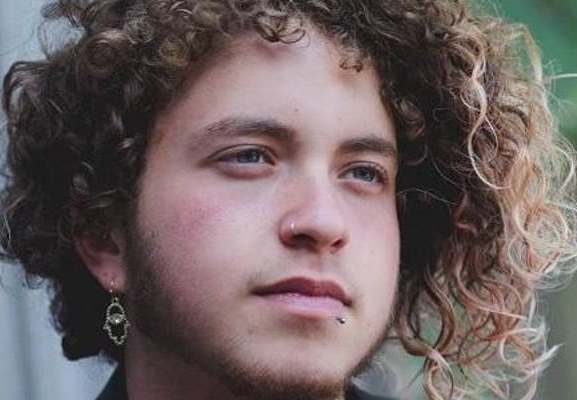


Sex assignment is the determination of an infant's sex
at the time of birth. In the majority of births, a
relative, midwife, nurse or physician inspects the
genitalia when the baby is delivered, and sex and gender
are assigned, without the expectation of ambiguity.
Sex
assignment at birth usually aligns with a child's
anatomical and biological sex. The number of births
where the baby does not fit into strict definitions of
male and female may be as high as 1.7%, of which 0.5%
are due to visibly ambiguous genitals. Other
reasons include atypical chromosomes, gonads, or
hormones. These conditions are collectively called
intersex or disorders of sex development, and may
complicate sex assignment. Reinforcing sex assignments
through surgical or hormonal interventions may violate
the individual's human rights.
The act of assignment carries the implicit expectation
that future gender identity will develop in alignment
with the physical anatomy, assignment, and rearing. In
the majority of cases, sex assignment matches the
child's gender identity. If sex assignment and gender
identity do not align, the person may be transgender or
gender non-conforming. The sex assignment of an intersex
individual may also contradict their future gender
identity.

What Does AMAB and AFAB Mean?
Time
Mag: This is What Intersex Means
Video: What it's Like to be Intersex
Info: Gender Queer
Wikipedia: Sex Assignment
Mari Wrobi: I Discovered I am Intersex When I Was 21
Years Old
Video Documentary 1: Real Intersex Stories
Intersex Explained: Androgen Insensitivity
Lambda Legal: Intersex Patient Rights
TED Talk: Intersex is Awesome
Intersex Documentary: Neither Male Nor Female
Here’s
What it Really Means to be Intersex
BuzzFeed: Interview With Intersex People
Klinefelter Syndrome Explained
Ana Roxanne: Intersex
Musician
Human Rights Watch: Doctors Need Intersex
Care Standards

Maria: I Happen to Like Girls, I Happen to be Intersex
Sara Kelly Keenan: First Intersex Birth Certificate
Video: The Way We Think About Biological Sex is Wrong
Teen Vogue: Teens Who Discovered They Are Intersex
InQueery: What Does Intersex Mean?
Info: Sex and Gender
Intersex People Talk: What It's Like to Be Intersex
Emily Quinn: What It's Like to be Intersex
MedLine Plus: Intersex
Intersex People Don't Need to Be Fixed
Advocate: Intersex Myths and Misconceptions
Video Talk: What is Intersex
Wikipedia: Hermaphrodite
Vogue:
Intersex Fashion Model Hanne Gabby Odiele
PBS Video: Growing Up Intersex
Biological Combination
Physical Variations
Some
people are born with a mix of male and female biological
traits that can make it hard for doctors to assign them
a male or female sex. These people are intersex.
What does
intersex mean? The intersex definition is a person is
born with a combination of male and female biological
characteristics, such as chromosomes or genitals, and
that can make it difficult for doctors to assign their
sex as distinctly male or female.
Being
intersex is a naturally occurring variation in humans,
and isn’t a medical problem. It’s also more common than
most people realize. It’s hard to know exactly how many
people are intersex, but estimates suggest that about 1
in 100 people born in the US is intersex.

There are
many different intersex variations. Some intersex people
have ambiguous genitalia or internal sex organs, such as
a person with both ovarian and testicular tissues. Other
intersex people have a combination of chromosomes that
is different than XY (male) and XX (female), like XXY.
And some people are born with what looks like totally
male or totally female genitals, but their internal
organs or hormones released during puberty don’t match.
If a
person is born with intersex genitalia, they might be
identified as intersex at birth. For people born with
more clearly male or female external genitals, they
might not know they’re intersex until later in life,
like when they go through puberty. Sometimes a person
can live their whole life without ever discovering that
they’re intersex.

What
happens when someone is born intersex? Awareness of
intersex conditions is growing. In the past, when a baby
was born intersex, doctors and the family would decide
on a gender and raise the baby as that gender (either
male or female). It was common for surgery to be done on
the baby’s genitals and also for the child to be given
male or female hormones as they went through puberty.
But of course sometimes the gender they picked didn’t
match the gender identity the young person grew up to
have.
So today,
more and more people believe unnecessary surgery and
other medical interventions should be postponed until
intersex people are old enough to decide for themselves
what gender they identify with and what, if any,
treatments they want.
If you
have a child who is intersex, open conversation about
gender is especially important throughout your child’s
life, whether or not your child has gender-assignment
surgery. It can help your child develop a healthy gender
identity and body image.
[Source:
Planned Parenthood]

Time
Mag: This is What Intersex Means
Androgen Insensitivity Syndrome Explained
Video: What it's Like to be Intersex
Info: Transgender
United Nations Adopts Historic First-Ever Resolution on
Rights of Intersex People
Emily Quinn: Androgen Insensitivity Syndrome
Here’s
What it Really Means to be Intersex
ABC News Report: Intersex Children
Dani Coyle: Spotlighting the Intersex Community
Quigley Scale: Phenotypic Grading of Genitalia
MedLine Plus: Intersex
Intersex People Don't Need to Be Fixed
Katie Talks to Oprah: Growing Up Intersex
Wikipedia: Hermaphrodite
Info: Gender Expression
Video: The Way We Think About Biological Sex is Wrong
Vogue:
Intersex Fashion Model Hanne Gabby Odiele
AIS: Androgen Insensitivity Syndrome
Video Documentary 2: Real Intersex Stories
Klinefelter Syndrome
Klinefelter Syndrome (KS), also known as XXY male (or
47XXY), is a condition that occurs in men who have an
extra X chromosome. They are typically referred to as
genderless, intersex, or hermaphroditic.
Klinefelter Sydrome is classified as a "Karyotype"
variation.
The
primary features are infertility and small testicles.
Often, symptoms may be subtle and many people do not
realize they are affected. The syndrome can affect
different stages of physical, language, and social
development. Sometimes, symptoms are more prominent and
may include weaker muscles, greater height, poor
coordination, less body hair, breast growth, and less
interest in sex. Often it is only at puberty that these
symptoms are noticed. Intelligence is usually normal.
However, reading difficulties and problems with speech
are more common.

The most
common symptom is infertility. Boys may be taller than
other boys their age, with more fat around the belly.
After puberty, KS boys may have... Smaller testes
and penis... Breast growth... Less facial
and body hair... Reduced muscle tone... Narrower
shoulders and wider hips... Weaker bones...
Decreased sexual interest... Lower energy.
KS males may have learning or language problems. They
may be quiet and shy and have trouble fitting in.


A genetic
test can diagnose KS. There is no cure, but treatments
are available. It is important to start treatment as
early as possible. With treatment, most boys grow up to
have normal lives. Treatments include testosterone
replacement therapy and breast reduction surgery. If
needed, physical, speech, language, and occupational
therapy may also help.
Other medical conditions that are closely related to
Klinefelter Syndrome are Marfan Syndrome and Androgen
Insensitivity Syndrome.
Harvard Medical School: Intersex Variations
Mayo Clinic: Klinefelter Syndrome
Video Documentary 1: Real Intersex Stories
TED Talk: Intersex is Awesome
Living with XXY:
Spreading Positivity and Awareness
Famous People with Klinefelter Syndrome
Video Documentary 2: Real Intersex Stories
Klinefelter Syndrome Explained
This is Me with Klinefelter Syndrome
Celebrities with Klinefelter or Marfan Syndrome
Classification of Intersex Variations
There are four
classifications of intersex variations: Karyotype,
Gonads, Genitalia, Hormonal Milieu.
Karyotype
--Klinefelter Syndrome (XXY)
--Turner Syndrome (XO)
--Mosaicism (XX/XY)
Gonads
--Gonadal Dysgenesis (Swyer’s Syndrome)
--Ovotesticular Syndrome
Genitalia
--Mϋllerian Agenesis (MRKH)
--Hypospadias
--Penile Agenesis or Microphallus
Hormonal Milieu
--Androgen Insensitivity Syndrome (AIS)
--Congenital Adrenal Hyperplasia (CAH)
--5-Alpha Reductase Deficiency (5-ARD)
[Source: Dr. Katharine Baratz Dalke, Director of Office
for Culturally Responsive Health Care Education, Asst
Professor of Psychiatry & Behavioral Health, Penn State
College of Medicine, March 2020]

Harvard Medical School: Intersex Variations
Mayo Clinic: Klinefelter Syndrome
Video Documentary 1: Real Intersex Stories
Living with XXY:
Spreading Positivity and Awareness
Emily Quinn: Androgen Insensitivity Syndrome
Famous People with Klinefelter Syndrome
Video Documentary 2: Real Intersex Stories
Klinefelter Syndrome Explained
This is Me with Klinefelter Syndrome
Celebrities with Klinefelter or Marfan Syndrome
Intersex Vs. Hermaphrodite
Male and Female Combo
There’s a
lot of misconceptions about what it means to be intersex,
and how intersex people differ from hermaphrodites.
Hermaphrodites are living things that have fully
functioning sets of “male” AND “female” reproductive
anatomy, either at the same time, or at different times
during their life cycles. They include various species
of plants, fish, mollusks, and other little beasties,
but not humans. It’s biologically impossible for humans
to have full, functional sets of “M” and “F”
reproductive anatomy, so we aren’t hermaphrodites.
Intersex
people, on the other hand, are those that have a mix of
traits traditionally considered “male” or “female” (and
sometimes, traits that are atypical for males or
females) in the same body. For example, I have breasts
and a vagina (“F” traits) and also have XY chromosomes
and was born with testes (“M” traits). Some intersex
people may also have traits such as ovotestes (gonads
with both testicular and ovarian tissue), chromosome
types like XXY, or a phalloclitoris that is sometimes
described as a large clitoris or a small penis.

Here’s a
scientific fact: The penis and the clitoris derive from
the same developmental tissue, hence, the term
phalloclitoris. The term “ambiguous genitalia” is often
used here. In actuality, everyone’s genital form is
just as real as everyone else’s, no one’s is
“ambiguous.”
There’s a
ton of variation in what our bodies look like and how
they function. Think about the people you know and how
different everyone’s body and build is, even though we
all have bodies. It’s the same thing for intersex
people. There is a variety of ways our bodies can look
in terms of what traits we do and don’t have, what our
bodies do and don’t do. Intersex is really an umbrella
term for the many different, distinct ways bodies can
be. Even within a form of intersex, there can be a lot
of variation.
So, why do
folks sometimes confuse intersex people with
hermaphrodites? In short, because of history. Doctors
applied this label to intersex people several centuries
ago, and calling intersex folks “hermaphrodites” is
really problematic for the following reasons:

Time
Mag: This is What Intersex Means
Video: What it's Like to be Intersex
Born Intersex: Runs in the Family
GLAAD: Debunking Intersex Myths
TED Talk: Intersex is Awesome
Intersex Documentary: Neither Male Nor Female
What Does AMAB and AFAB Mean?
Info: Transgender
Here’s
What it Really Means to be Intersex
Sex Redefined: The Idea of 2 Sexes Is
Overly Simplistic
Dani Coyle: Spotlighting the Intersex Community
Between Genders: Exploring Intersex
Massachusetts: Model for Intersex Rights
Sara Kelly Keenan: First Intersex Birth Certificate
--It’s not
biologically accurate.
--The term
derives from Greek mythology where the kid of Hermes and
Aphrodite (Hermaphroditus) basically gets attacked and
fused together with this water nymph. And together,
they form a “half-male, half-female” being. So, calling
intersex people “hermaphrodites” implies that we’re not
real, that we’re mythical creates that don’t exist.
That’s both inaccurate and offensive.
--Intersex
people associate this term with the stigmatizing
cosmetic procedures clinicians performed (and sadly,
routinely perform today) on intersex kids without their
consent, with the idea that surgeries and other
procedures will make us LOOK like “normal boys and
girls,” so we’ll BE normal boys and girls. I probably
don’t need to tell you how totally messed up this is.
This is what intersex activists are working toward: to
end these unnecessary, harmful procedures and ensure our
right to keep the healthy, beautiful bodies we’re born
with. Intersex isn’t a medical condition, and we DON’T
need fixing.
Even
though it’s widely considered offensive and not-okay to
refer to intersex people as “hermaphrodites,” some
intersex folks have reclaimed the term as a positive way
to engage with other intersex people. For example, I
get “herm hugs” from some of my intersex friends, and
one intersex activist I know, who’s a lesbian, has
referred to herself as a “hermaphrodyke.”
[Source: Claudia Astorino, Everyone is Gay]
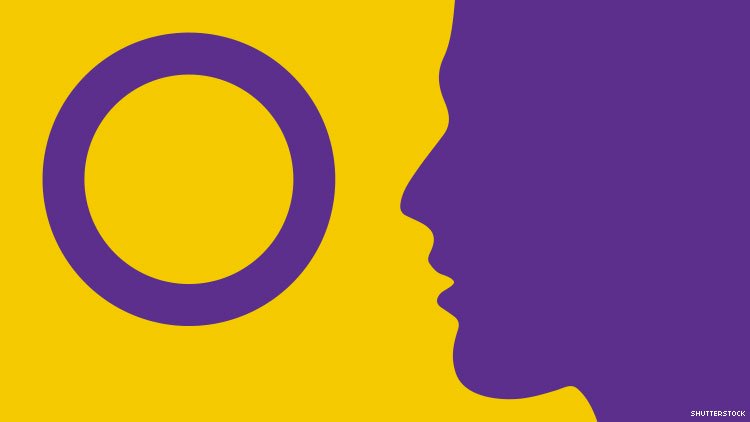
Video Documentary 1: Real Intersex Stories
Info: Sex and Gender
Human Rights Watch: Doctors Need Intersex
Care Standards
InQueery: What Does Intersex Mean?
Colorado Issues Intersex Birth Certificates
Emily Quinn: Intersex Experiences
MedLine Plus: Intersex
BuzzFeed: Interview With Intersex People
Info: Gender Expression
Video: What Does Intersex Mean?
Lambda Legal: Intersex Patient Rights
PBS Video: Growing Up Intersex
Video Talk: What is Intersex
Intersex People Don't Need to Be Fixed
Info: Gender Queer
Wikipedia: Hermaphrodite

HOME
QUEER CAFE
│ LGBTQ Information Network │ Established 2017 |